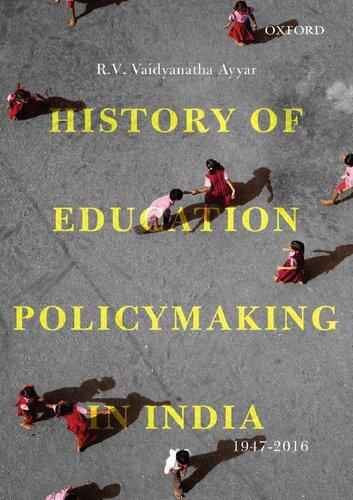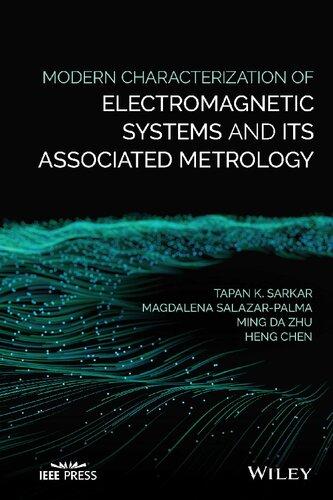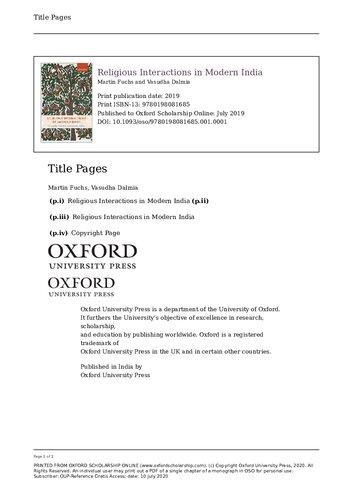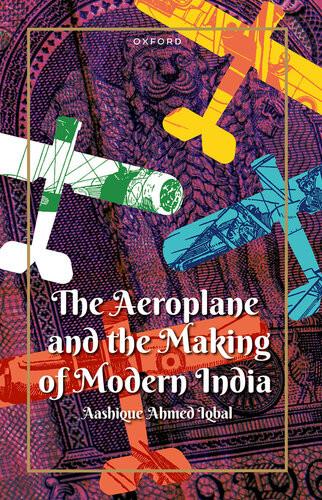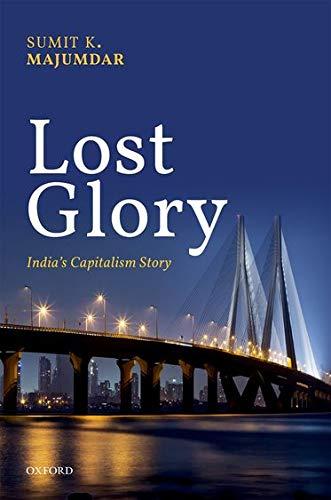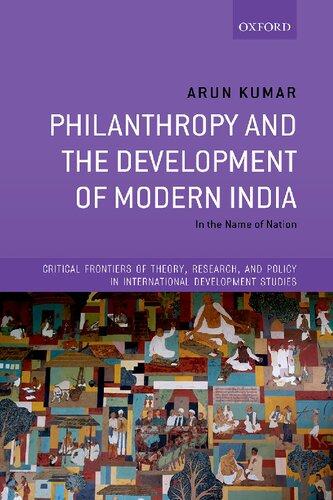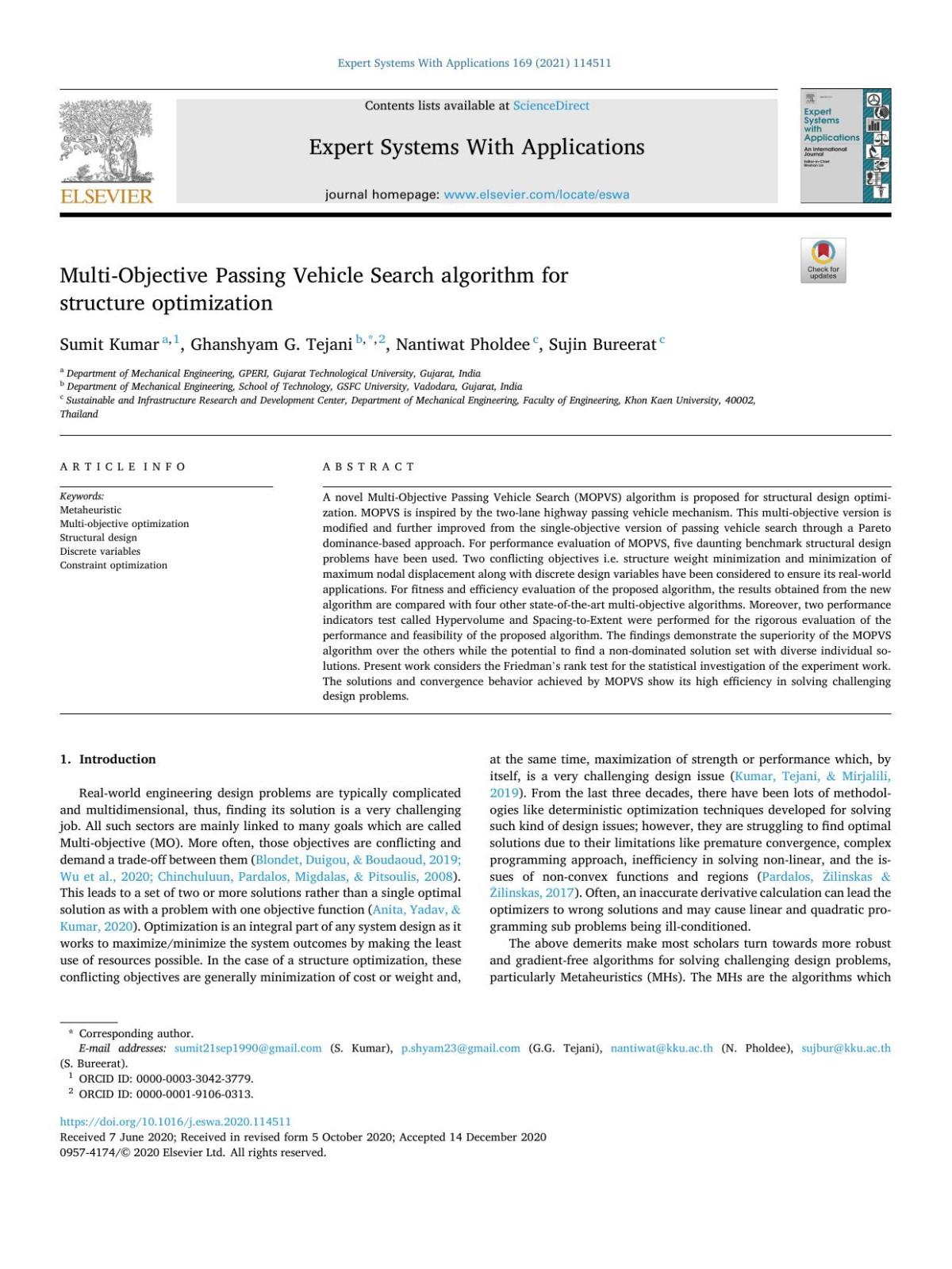INTROduCTION
ChANgE ANd CONTINuITy
The sixty years or so that lie between the foundation of the Indian National Congress in 1885 and the achievement of independence in August 1947 witnessed perhaps the greatest transition in our country’s long history. A transition, however, which in many ways remained grievously incomplete, and it is with this central ambiguity that it seems most convenient to begin our survey.
The illusion of permanence held powerful sway over the minds of the British in India in 1885, eight years after the Empire had been proclaimed at a grandiose Durbar held in the midst of famine. An ideology of paternalistic benevolence, occasionally combined with talk of trusteeship and training towards self-government, thinly veiled the realities of a Raj uncompromisingly white and despotic. Political decision-making and administration at higher levels were entirely the privilege of the Europeans, who in the early 1880s manned all but 16 of the 900-odd posts in the Indian Civil Service. The inclusion in 1861 of a handful of nominated ‘natives’ in Provincial and Supreme Councils had been accompanied by a reduction in the powers of the latter. Even the local self-government introduced with much fanfare by Ripon was essentially no more than a measure of necessary financial decentralization. ‘We shall not subvert the British Empire by allowing the Bengali Baboo to discuss his own schools and drains’, was the eminently appropriate comment of Finance Member Evelyn Baring. Even the fig-leaf was absent in really vital things like the army, where no Indian would be permitted till 1947 to rise above the rank of a Brigadier.
Indian collaborators were obviously indispensable for the day-to-day running of a huge country. What contributed greatly to British self-confidence was the ease with which such dependent allies seemed obtainable. The post1857 years had seen the renewal and consolidation of links with princes, zamindars and a variety of urban and rural notables, and the 662 Indian native rulers in particular were to remain the most loyal of bulwarks till the very end. Macaulay’s vision of an English-educated intelligentsia brown in colour but white in thought and tastes was, it is true, beginning to turn a bit sour by the 1880s. Yet the ‘middle class’ ambitions which went into the making of provincial associations in Calcutta, Bombay, Poona and Madras and eventually found expression through the Congress were still little more
than an irritant. Hume’s alarmist pleas for official patronage for Congress as a ‘safety valve’ to prevent another Mutiny could be dismissed by Dufferin with lofty aristocratic disdain: ‘He [Hume] is clever and gentlemanlike, but seems to have got a bee in his bonnet.’ (Dufferin to Reay, 17 May 1885)
In 1888, the Viceroy proclaimed Congress to represent no more than a ‘microscopic minority’ and Sir John Strachey assured Cambridge undergraduates: ‘there is not, and never was an India, or even any country of India… no Indian nation, no “people of India” of which we hear so much… that men of the Punjab, Bengal, the North-West Provinces and Madras, should ever feel that they belong to one great Indian nation, is impossible. (India, London, 1888) The evident element of propaganda and wishful thinking has to be discounted, but such estimates and predictions did not seem too unrealistic in the 1880s. All-India connections were as yet largely confined to a thin upper crust of English-educated professional groups. Congress demands, put forward in the form of gentlemanly resolutions at staid annual sessions which still eagerly asserted their basic loyalism, could find as yet no resonance amidst the peasant millions, and despite the fairly clear-cut formulation of a perspective of independent capitalist development (which represented by far the greatest contribution of Moderate intellectuals to our nationalism), response from the emerging Indian bourgeoisie was also fairly minimal. Lower-class discontent was inevitably endemic in what had become by the nineteenth century certainly one of the poorest countries in the world, and the ten years or so before 1885 had seen powerful agrarian leagues in east Bengal against zamindari excesses, anti-moneylender riots in the Maharashtra Deccan, and a formidable tribal rising in the ‘Rampa’ region of Andhra. But the edge of such movements tended to be directed against the immediate oppressor rather than the distant British overlord, as when the Pabna peasants in 1873 wanted to become raiyats of ‘Maharani Victoria’ alone. There were ample objective foundations here for divide-and-rule policies, with divisions between communities often interlocking with class tensions: Muslim peasants and Hindu gentry in east Bengal, Moplah Muslim cultivators and Nambudri or Nair caste Hindu landlords in Malabar, Muslim talukdars and Hindu tenants in parts of the United Provinces, or Hindu moneylender-merchants and Muslim or Sikh peasants in the Punjab.
Yet the national movement did eventually go far beyond its original eliteintellectual confines. By 1936 the Congress President could legitimately claim that Congress had now ‘become the largest organization of the common people drawn very largely from the village population and counting amongst its members lakhs of peasants and cultivators and a sprinkling of industrial and field workers.’ The movement expanded in both geographical and social terms in a succession of waves and troughs, the obvious high-points being
1905–1908, 1919–1922, 1928–1934, 1942 and 1945–1946. The focus shifted from Bengal, Maharashtra and Punjab in the Extremist phase to new areas like Gujarat, Bihar, U.P., Central Provinces, and Andhra in the Gandhian, and from city intellectuals to small-town lower middle classes, large sections of the peasantry, and influential bourgeois groups. There was a corresponding evolution of new forms: swadeshi, boycott, and passive resistance, Gandhian satyagraha and constructive village work, as well as methods often frowned upon by the leaders, yet surely of considerable importance at times—revolutionary terrorism, strikes, outbursts of urban, peasant or tribal violence. By the 1930s, Kisan Sabhas and trade unions were fast becoming a real force in many parts of the country, and popular movements were also emerging in many of the princely states. Despite all the slide-backs, limitations and contradictions, what all this amounted to was the irreversible historical fact of the entry of the masses into active political life. A changed international situation and mass pressure combined to bring about the withdrawal of 1947, barely five years after a British Prime Minister had declared that he had not come to occupy his high post to preside over the liquidation of the Empire. This was followed by the quick elimination of the princely states, the abolition of zamindari and the establishment over the major part of the subcontinent of parliamentary democracy based on universal franchise. The underlying social changes had also been considerable, most notably the emergence of a number of rich peasant groups and the consolidation of a bourgeoisie weak and vacillating by the standards of classic capitalist development, yet of considerable strength and maturity if compared to most other countries of the Third World.
But the pattern evidently has been one full of paradoxes, of continuities as much as change. The Congress fought against the Raj, but it was also progressively becoming the Raj, eventually taking over without major change the entire bureaucratic and army structure, the ‘heaven-born’ civil service and all, merely substituting the brown for the white. Independence Day was replete with contradictions: unforgettable scenes of mass rejoicing, the swearing-in as Prime Minister of a flaming radical of the 1930s by Lord Mountbatten amidst all the pageantry of Empire, and a ‘Father of the Nation’ who said that he had run dry of messages and who was to spend the last months of his life in a lonely and desperate struggle against communal violence. Riots and Partition represented the most obvious of the failures from the point of view of the ideals of the Indian national movement. Perhaps even more fundamental was the fact that so very many of the aspirations aroused in the course of the national struggle remained unfulfilled—the Gandhian dream of the peasant coming into his own in Ram-rajya, as much as Left ideals of social revolution. And as the history of independent India
and Pakistan (and Bangladesh) was to repeatedly reveal, even the problems of a complete bourgeois transformation and successful capitalist development were not fully solved by the transfer of power of 1947.
Our major theme must necessarily be the search for the roots of this profoundly ambiguous and contradictory pattern, and the central focus will be provided by the complex and conflicting history of anti-imperialist movements in modern India. As a preliminary, however, a brief glance at the existing state of historical literature on our subject seems called for.
OLd ANd NEW APPROAChES
Writing a general history of the last sixty years of British rule has become today both more exciting and far more difficult than ever before, in view of the veritable flood of recent detailed studies particularly on the national movement.1 Till about a decade back, the available literature consisted of a few studies of Viceroys, works on constitutional developments, a number of biographies of Indian leaders along with their own writings, and some general all-India surveys of the development of nationalism. Published secondary sources formed the basis for the bulk of such writings, as access to official archives was severely limited for recent periods and little systematic search had been made yet for private papers. Despite the obvious differences of approach between Chirol, Sitaramayya, Tarachand or R.C. Majumdar (to mention only a few notable examples), a certain rough consensus seemed to exist here. The basic pattern was of an English-educated ‘middle class’ reared by British rule, engaging in various renaissance activities, and eventually turning against their masters and so giving birth to modern nationalism—out of frustrated selfish ambitions, ideals of patriotism and democracy derived from Western culture, or natural revulsion against foreign rule, the imputed motive in each case depending on the viewpoint of the scholar. Scholars with imperialist affiliations tended to focus on the continued divisions within Indian society, the limited and sharply fluctuating appeal of even the Gandhian Congress, the Muslim breakaway and Partition. To nationalist historians, on the other hand, the ultimate breakthrough to the masses seemed both impressive and only natural, since potentially the interests of all Indians were surely always opposed to alien domination, and only a charismatic leader had been lacking. It has to be added that as a historiographical trend, nationalist writing on the freedom movement has been on the whole more than a little inadequate. Professional Indian scholars tended to keep away from such themes till the 1950s (preferring to express
1. For bibliographical details, see end of book.
their patriotism through the vicarious but safe medium of allegedly national Rajput or Maratha movements against Mughal rule) and regional and communal distortions have been all too obvious at times. In R.C. Majumdar’s well-known volumes on the freedom movement, for instance, a veritable cult of the educated Bengali Hindu is combined with a frank acceptance of the two-nation approach. As in some writings on medieval India, Hindus and Muslims are assumed to have been always homogeneous entities naturally opposed to each other—a clear example of the reading back into the past of present-day communal prejudices. But even in more genuinely nationalist history-writing an abstract cult of the people or nation often did not prevent a basically elitist and sometimes quite uncritical glorification of a few great leaders. As for the socio-economic roots and dimensions of the national movement, it was natural for imperialist scholars to fight shy of such themes, but nationalist historians have not been very much better— since with a few exceptions they have seldom tried to integrate into their interpretations of modern Indian history even the findings of nationalist economists of the Naoroji–Dutt generation. Charges of elitism and neglect of the colonial framework certainly cannot be brought against the handful of serious early Marxist works on our period—R.P. Dutt above all, but also M.N. Roy, A.R. Desai and some Soviet scholars. But on the whole these failed to offer a fully satisfactory alternative, being usually over-general and sometimes rather mechanistic in their use of class-analysis.
That our subject wears a new look today (though often in appearance rather than essence, for we shall see many old assumptions lingering on) is due in part to the much greater use of archival material, private papers, as well as of local sources unearthed through field studies. Government archives are now open to scholars for the entire colonial period, rich collections of private papers have been built up in places like New Delhi’s Nehru Memorial Museum and Library, and historians are becoming increasingly aware of the value of field studies and interviews. But even more important is the role of new hypotheses, always controversial and at times positively dubious, but still extremely stimulating—and in this field the so-called Cambridge school has been particularly prolific. Anil Seal on early Indian nationalism, the American historian Broomfield on Bengal, and to some extent Judith Brown on the rise of Gandhi, set the fashion of interpreting nationalism in terms of uneven development and competition of provincial, generally caste-based, elites—Bengali bhadralok, Chitpavan Brahman, the ‘sub-elites’ of the Hindi belt or Andhra. The further assumption that patriotism was no more than a rationalization of extremely narrow and selfish material motives like jobfrustration created a picture not too different really from that drawn by numerous spokesmen of the Raj and blatant imperialists like Valentine Chirol.
In 1973, however, the Cambridge school announced with some fanfare that the elite approach had fallen down the ‘trapdoor of historiography’ and that from province and elite one must shift to locality and faction. (Gallagher, Johnson, Seal, eds., Locality, Province and Nation) A combination of administrative pressures and opportunities, as the British imposed new burdens and simultaneously sought new collaborators through constitutional reforms, would then allegedly explain the occasional coalescence of local patron-client groups into provincial or even national platforms. As applied most notably by Washbrook and Baker to south India, Bayly to Allahabad, Gordon Johnson to Bombay Moderates and Extremists, and Robinson to U.P. Muslims, this approach has certainly proved quite fruitful in terms of new data.
Yet certain continuities persist between the early and the modified Cambridge approach. With the exception of Bayly, perhaps, the tendency is still to play down the role of ideology and patriotic motivation. Such cynicism is at times a healthy corrective to the hero-worship typical of much nationalist historywriting Yet a logical distinction has to be made between the significance of a set of ideas and the possibly selfish motives which might have led particular individuals to formulate or accept them. Job-frustration may or may not have produced Bankimchandra’s patriotic novels; their total impact remains an important historical fact. More significant is the slurring-over of the economic and racist dimensions of the colonial situation. The south Indian ‘rural-local bosses’ analysed by Washbrook were surely a dependent product of the colonial economy and polity. The statement that the Madras ‘Governor and his minions…were distributing among themselves the scraps of the political system’ contrasts oddly with the fact that in the early twentieth century the Viceroy had 700 servants and a salary double that of the British Prime Minister. Even in the 1930s, as Gandhi would remind Irwin on the eve of his Dandi March, the Viceroy’s salary was 5000 times that of the average Indian, while a white junior Jail Governor of Bengal could afford a round the world trip on a holiday taken soon after shooting down political prisoners at Hijli. (Baker Papers, Cambridge South Asia Study Centre) The new patron-client model seems more than a little over-extended when it is used to describe both Malaviya’s connections with the Tandon business group in Allahabad and the relations between Hindu zamindars and Muslim peasants of east Bengal. In their equation of politics with factionalism, the Cambridge scholars are modelling themselves on Namier’s studies of mid-eighteenth century England. Illuminating for periods of oligarchical politics and bereft of fundamental tensions, such an approach becomes progressively less so when it is a question of analysing major conflicts involving large masses. Namierism tends in fact to by-pass periods of big movements: thus Bayly’s otherwise valuable study of Allahabad ends abruptly in 1920. Above all, elitism may persist even when
shifted down into the locality: ‘The leaders of the movement, that is to say the people who created it, require a careful analysis, for in their ambitions must lie its causes.’ (Washbrook, Emergence of Provincial Politics, p. 279) Very recently, however, historians like Bayly, Washbrook and Baker seem to be moving away from the study of patrons and factions towards straightforward economic history of considerable value.
It would be very unfortunate if the fame, at times amounting to notoriety, of the ‘Cambridge School’ is allowed to obscure the considerable work over the last decade of a large number of other historians, both Indian and foreign. Sussex and Canberra–based scholars associated with D.A. Low have been perhaps less prolific or systematic about hypotheses, but considerably more open in their ideas. The collections on the Rowlatt Satyagraha and the more recent Congress and the Raj have also been refreshingly free of inhibitions concerning the study of periods of mass upsurge. Peasant movements in contrast are often being given pride of place, though the generalization made at times about the role of dominant village groups or rich peasants may or may not be fully acceptable. Imperial policy-making is currently not a very fashionable field, but one must mention here the works of P.S. Gupta on British Labour attitudes to imperialism, R.J. Moore on the vicissitudes of the federal experiment and Peter Robb on the making of dyarchy. American contributions include studies of the Arya Samaj and nationalism in the Punjab, caste politics in south India, peasant movements in Bihar, and recently an excellent study of the early Congress by J.R. McLane. Among the numerous works on social and political trends among Muslims, mention may be made of Aziz Ahmed on Islamic modernism, Ziya-ul Hasan Faruki on Deoband, Peter Hardy’s useful general analysis and the recent books of Rafiuddin Ahmed, Mushirul Hasan and Gail Minault. Indian Marxist historians have occasionally reacted to the Cambridge denigration of anti-imperialist movements by taking up a stance rather difficult to distinguish from conventional nationalism. ‘Sectarian’ and unduly negative estimates of the national leadership, characteristic of R.P. Dutt and some earlier Soviet writings, have been replaced at times by virtual hero-worship of Tilak, Gandhi or Nehru, in an unfortunate oscillation in which one extreme feeds the other. But Marxists have also produced detailed studies of Moderate economic ideology and of political movements in Bengal and Assam, as well as a considerable literature on Left movements. And both Marxist and nonMarxist scholars have been increasingly shifting to real grass-roots studies based on village level data, with historians like David Hardiman, Majid Siddiqi, Kapil Kumar, Gyan Pandey, Stephen Henningham and Hitesh Sanyal exploring Gujarat patidars, U.P. kisans, Bihar peasants and the rural Gandhian movements of parts of Bengal. What is emerging through such studies is a
new emphasis on ‘a history from below’, distinct from all variations of elite approaches.
Such field-work has the additional advantage of bringing the historian into closer touch with the disciplines of sociology and social-anthropology and, hopefully, stimulating an interaction almost absent in our country so far. Indian anthropology for long was virtually identified with the study of tribal life in isolation; then from the 1950s came the new fashion of studies of caste structures, movements and associations. The modern Indian historian cannot afford to neglect the valuable data collected through such research, though he would be well-advised also to keep in mind Andre Beteille’s warning that caste mobility might often represent no more than the upthrust of small groups of notables. ‘A sociologist might certainly wonder why we have so many detailed studies of caste associations and so few of peasant organizations’, Beteille added in a review of the Rudolphs’ influential Modernity of Tradition. (Indian Economic and Social History Review, September, 1970)
Social history unfortunately still remains a very neglected subject in India, often being virtually equated with the study of social reform endeavours. Work on the formation of classes and class consciousness is only just beginning, and while the development of vernacular literatures is obviously one of the really crucial features of modern Indian history, there is little sign as yet of such things becoming the subject of scientific historical or sociological research. Written literature in a largely illiterate country, however, can be a guide to the ideas and values only of a minority. A recent French historian has emphasized the need to study also the ‘songs, dances, proverbs, tales and pictures of the country folk to win an entry into the peasant mind’ (Eugene Weber, Peasants into Frenchmen); such methods still await application in India.
Historians of modern India, finally, require major sustenance from economists, though here a problem is created by the ill-concealed contempt for economic history displayed at times by the more formalist and mathematicallyminded contemporary practitioners of the latter discipline. For an understanding of the over-all working of the colonial economy, we often still have to turn to the nationalist economists of the turn of the century (supplemented in the 1930s by Buchanan and D.R. Gadgil and in the 1940s by R.P. Dutt), even though their work, path-breaking for their own time, appear more than a little dated and unsophisticated today. Historians for their part have done considerable work on eighteenth and nineteenth century trade, finance, revenue policies and agrarian relations, but relatively less on the post-1900 period, where some amount of technical training in economics becomes increasingly useful in the face of mounting complexities and statistical data. How valuable
the contribution of economists can be has been amply indicated by the essays of the Thorners, George Blyn’s study of agricultural productivity, Amiya Bagchi’s analysis of colonial constraints on indigenous private investment in India, as well as by numerous research papers in the pages of the Economic and Political Weekly and the Indian Economic and Social History Review. The sudden expansion of research on modern India over the last decade has made existing textbooks and general studies seriously out-of-date. Something like a synthesis, however, provisional or incomplete, of this wealth of new material has become essential, and that is the main purpose of this volume. While based in the main on available published books and papers, I have at times attempted to fill some of the gaps in data or methods through independent research. No historian can be free of bias, and unstated or unconscious bias is the most dangerous of all; it is best therefore to baldly state at this point my principal assumptions. First, I consider colonial exploitation and the struggle against it to be the central theme of the years I am trying to survey. At the same time, I feel that it would be quite inaccurate and misleading to ignore, as nationalist historiography has often tried to do, the many internal tensions within Indian society. Thirdly, while factional squabbles certainly form a part of our story, underlying class-tensions tended to be much more decisive in the long run—though class and class-consciousness are analytical tools which have to be used more skillfully and flexibly than has sometimes been the case. Finally, and above all, my basic quarrel with conventional nationalist, communalist, Cambridge, and even some Marxist historiography is that despite all their obvious mutual opposition, they have tended to share a common elitist approach. But anti-imperialism in our country, I believe, had both a relatively elite and a more populist level, and a historian must not ignore the second simply because the first is so much easier to study. It was through the complex interaction of these levels that there emerged ultimately the pattern of continuity through change that I consider dominant for this period.
In 1890, when Moderate Congress politics of ‘mendicancy’ seemed to be the only kind of nationalism that existed or could exist, this is what a Bombay Governor was writing confidentially to the Viceroy: ‘The Forest policy, the Abkari (excise) policy, the Salt duty, the screwing up of land revenue by revision settlements, all make us odious.... We know pretty well what the educated natives want, but what the feelings are of the uneducated, I admit I don’t know.’ (Reay to Lansdowne, 20 February 1890) A vivid awareness surely of fires underground and forty years later Mahatma Gandhi would forge an all-India movement precisely around the issues of salt and land revenue, excise and forest rights. There are depths and continuities here waiting to be explored.
This page is intentionally left blank.
Chapter 2
POLITICAL ANd ECONOMIC STRuCTuRE:
1885–1905
IMPERIAL STRuCTuRE ANd POLICIES
Till well into the twentieth century, British Government in India was basically an autocracy of hierarchically organized officials headed by the Viceroy and the Secretary of State, while the ultimate Parliamentary control was spasmodic and largely theoretical. Developments after 1858 had in fact considerably enhanced the personal role of the Viceroy-Secretary of State combine, while bringing them into much closer contact with each other through the communications revolution symbolized by the submarine cable and the Suez Canal (1865–69). The East India Company’s affairs had been live political and economic issues in England, and renewals of Charter Acts had provoked intense debates in Parliament. After 1858, the routine annual presentation of Indian financial statements and ‘Moral and Material Progress Reports’ usually quickly emptied the Commons. The Court of Directors had remained influential through its patronage functions; the Council of India set up by Lord Stanley’s Act as a check on the Secretary of State never acquired much importance, as it could be over ruled on most matters and by-passed through ‘urgent communications’ or ‘secret orders’ to the Viceroy. In India, too, the railway and the telegraph brought local governments closer to Calcutta, while Coupland reminds us that there was no trace of the federal idea’ before 1919. (Constitutional Problem) The Indian Councils Act of 1861 had also strengthened the Viceroy’s authority over his Executive Council by substituting a ‘portfolio’ or departmental system for corporate functioning. The imperial and local Legislative Councils enlarged or set up by the same Act included a few non-official Indians but were essentially decorative. Being entirely nominated bodies till 1892, they even lacked, before the reforms of that year, any statutory powers of discussing budgets or putting questions. The political structure thus concentrated enormous powers in the hands of the Viceroy and the Secretary of State, and so some consideration of their personal attitudes and political affiliations remains relevant—even though the habit of dividing British Indian history into neat Viceregal periods has fortunately died out.
Viceregal Attitudes
Politically conscious Indians in 1885 were certainly very much aware of differences between Viceroys, and above all, between what they considered to be the almost black-and-white contrast of Lytton with Ripon. They also tended to relate the change directly to the conflict between Tories and Liberals in British politics. Writing a history of Indian National Evolution in 1915, the Moderate Congress leader Ambikacharan Mazumdar counterposed ‘the gathering clouds’ under Lytton to ‘the clouds lifted’ and ‘the dawning light’ under Ripon and Dufferin, and even a much more recent and sophisticated scholar has contrasted the ‘Conservative Adventure’ of 1869–80 to the ‘Liberal Experiment’ of 1880–88. (S. Gopal, British Policy in India)
Rhetoric apart, the really significant difference lay in a shortlived attempt in the early 1880s to expand the circle of Indian collaborators from princes and zamindars to English educated ‘middle-class’ groups. Lytton had dismissed the latter as ‘Babus, whom we have educated to write semiseditious articles in the Native Press’; Ripon in contrast liked to talk about ‘the hourly increasing… necessity of making the educated natives the friends, instead of the enemies, of our rule.’ (Anil Seal, Emergence of Indian Nationalism, pp. 134, 149) The unexpected fury of the Anglo-Indian reaction to the Ilbert Bill in 1883 quickly ended that experiment, even while investing Ripon in educated Indian eyes with a largely unjustified nearmartyr’s halo.
Under Dufferin (1884–88), Lansdowne (1888–93) and Elgin (1893–98), the differences between Tory and Liberal attitudes towards India became steadily less evident. Dufferin uneasily and ineffectively sought to have the best of all possible worlds, surrendering to white commercial pressure in the annexation of Upper Burma, introducing pro-landlord modifications in Bengal and Oudh tenancy bills, briefly flirting with Hume, but then violently attacking the Congress in the St. Andrews’ Dinner speech just before departure. In the end he managed to please no one, an Dinshaw Wacha pointed out to Dadabhai Naoroji in a private letter—the former in December 1888 went so far as to say that he could ‘tolerate a Lytton but not a Dufferin’. (R.P. Patwardhan, ed., Dadabhai Naoroji Correspondence, Vol II, p. 137) How irrelevant British party divisions were becoming in the Indian context was revealed by the promptness with which Lansdowne, appointed by the Tory Salisbury ministry, took up Dufferin’s private pleas for some elective element in provincial councils, both arguing in almost identical terms that such a move would ‘take the wind out of the sails’ of the Congress. Concessions to Lancashire in the form of countervailing excise duties on
Indian cottons were made under Elgin, a Viceroy appointed by Gladstone’s last administration, and the ‘Grand Old Man’ himself badly let down his Indian admirers in 1892 by refusing to support an amendment to the Lord Cross Bill, wanting explicit introduction of elections, and again in 1893 when he allowed Kimberley and Lansdowne to ignore a Commons resolution wanting simultaneous ICS examinations.
The irrelevance of party divisions may have had something to do with the political confusion in England after the mid-1880s when the Liberals split over Gladstone’s Irish Home Rule. The Liberal tradition in any case had always been somewhat ambiguous, including Whig admirers of aristocratic leadership, Radical advocates of greater democracy, Liberal-imperialists difficult to distinguish from Conservatives in foreign policy as well as ‘Little-England-ers’ genuinely opposed to military expansion (though not to the considerable material gains of free trade). More important than political ideologies, however, were certain consequences following from the over-all logic of the colonial situation, and it is to these more long-term trends that we must now turn.
Foreign Policy
In British Indian foreign policy, while there was no return before Curzon’s time to the flamboyant imperialism of Lytton, attitudes on the the whole remained considerably more aggressive than in the days of ‘masterly inactivity’ of the 1860s. This becomes understandable in the context of the over-sharpening imperialist rivalries with Russia advancing towards Afghanistan and Persia and France establishing control over Indo-China. Liberals in opposition had violently denounced Lytton’s Afghan adventure, yet Ripon’s policy in the end hardly marked a total break. The plan for breaking up Afghanistan was abandoned, as well as the insistence on a British Agent at Kabul. But Abdur Rahman (Lytton’s eventual choice) was allowed to remain as Amir with controls on foreign policy imposed in return for a subsidy, while the British retained Pishin and Sibi and turned them into British Baluchistan in 1887.
In Dufferin’s time, the Russian seizure of the Afghan border-post of Panjdeh (March, 1885) led to acute tension, but eventually the issue was submitted to arbitration by the King of Denmark. An agreement concerning the Afghan frontier was reached with Russia in July 1887. With the militarist Lord Roberts as commander-in-chief from 1887–92, a forward policy was, however, followed on the north-west frontier involving numerous expensive expeditions against tribes, the construction of strategic railways, the imposition in 1893 of the Durand agreement demarcating the

